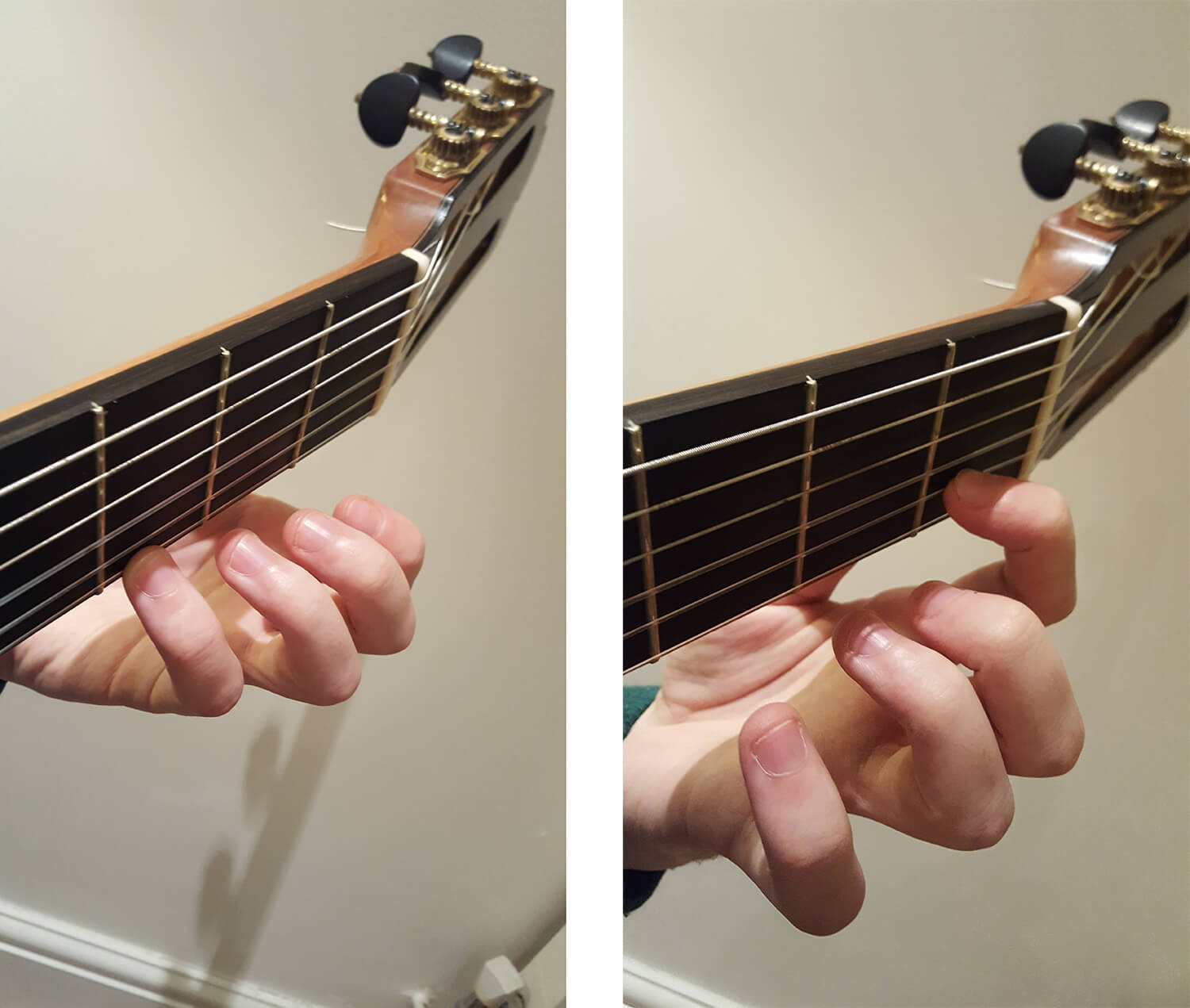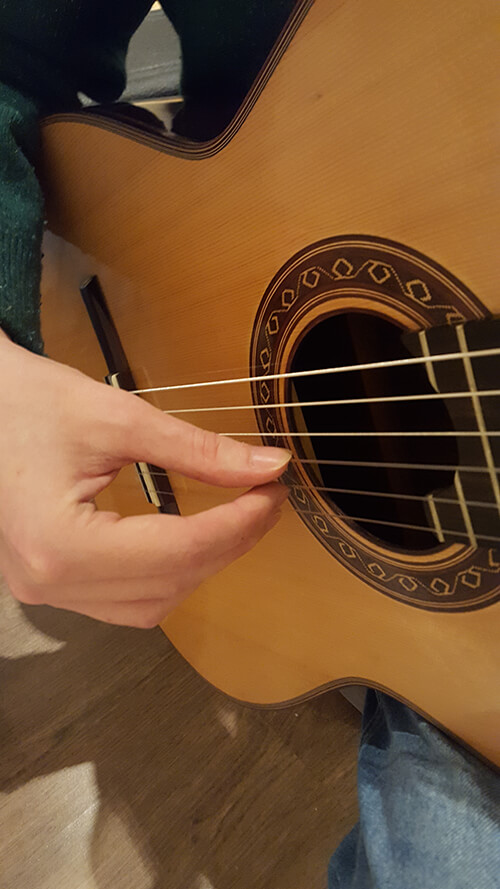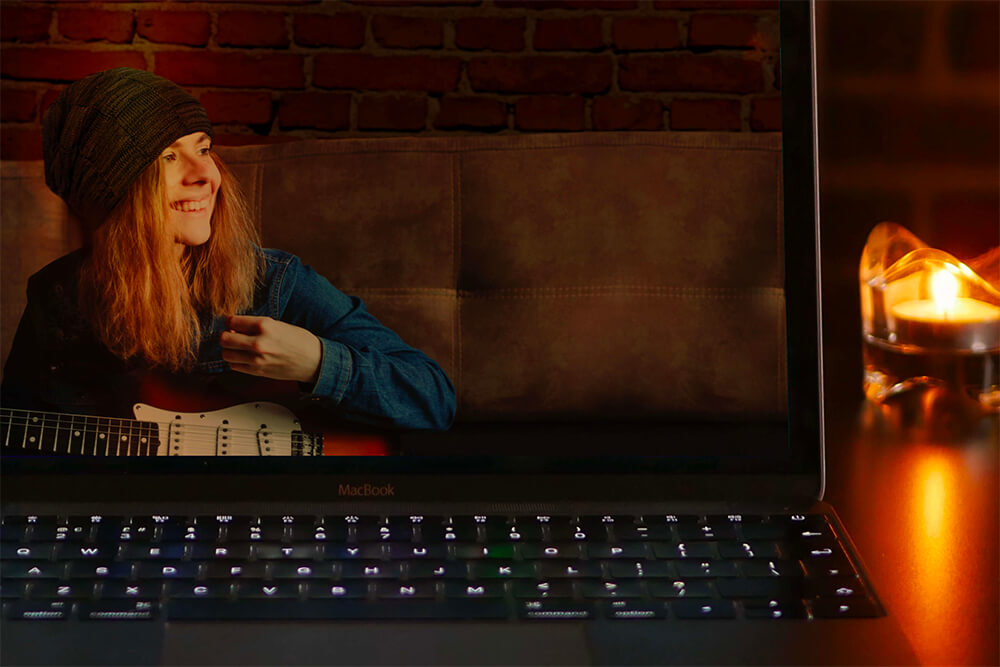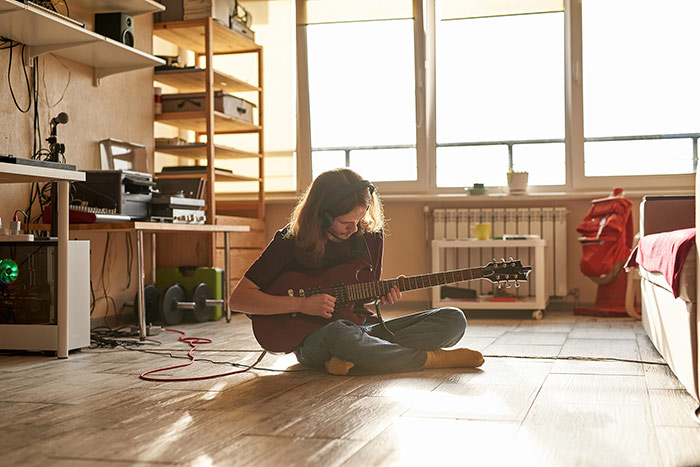Learning to play an instrument is one of the most enriching things you can do! For some it is a skill for self-development, whilst for others it can be a healthy form of escapism that promotes creativity and self-discipline.
Whether you have decided to pick up the classical guitar for the first time or following a break, it can be an overwhelming world to step in to.
This article is here to explain how easy it can be and lists the things you need to get started!
A decent instrument and teacher
You will need an instrument of course.
It is important to note that classical guitars are not all built the same. A decent instrument will be easier on your fingers and have a higher sound quality – two important things in the beginning.
I recommend the Yamaha C40 to my students as it is designed with the beginner in mind.
As well as an instrument, it is a good idea to purchase a foot stool (or leg rest). This helps us position the guitar in the most ergonomic way to play.
Some classical guitarists like to grow their nails out on their right hand (a few millimetres is usually enough). This is to help create a more powerful sound and gives the player more control over their tone. However, whilst recommended, this is a personal choice and certainly not compulsory. There are many great guitar players who do not do this!
There is an abundance of high-quality content when it comes to online tutorials.
Many of my first-time students tell me that they have been self-taught for years but feel that they have a ‘hit a wall’.
I believe that this is because, whilst video tutorials can teach us a lot, they can’t tell you what you are doing wrong and you can’t ask it questions. These are two things that you can only get from a teacher.
A good teacher will help guide you through a logical progression. Ensuring that there are no missing gaps of knowledge as well as correcting errors that could result in poor technique.
Basic lingo
It is natural to assume that we need a body of knowledge before we start playing an instrument. But sometimes this can be a distraction from what is really important: just getting your fingers on the strings! – The more time we spend getting to feel the instrument in our hands, the more confident we become.
This being said, it is good to have a place to begin and learning your first chords is a great way to get playing right away.
The guitar is designed around chords and learning your first shapes is a wonderful way to begin understanding its layout – I would recommend G and C chord to start.
G – place your finger on the third fret of the thinnest string
C – place your finger on the first fret of the second thinnest string
In classical guitar, we assign letter, numbers and names to our fingers. Being aware of this would be a useful way to communicate with your teacher.
We call the fingers on the left hand 1, 2, 3, 4 and the right hand p, i, m, a.
This stands for:
- Pulgar – thumb
- Indeces – index
- Middle – middle
- Anular – ring
With this new knowledge, we can begin playing:
- Place a C chord
- Place p, i, m (see photo below)
- Pluck your right-hand fingers consecutively
- Repeat 4 times
- Change to ‘G’ chord and repeat
Learn to read
If one of your goals is to be able to read music, then starting from the beginning will save you a lot of time in the future!
Guitar players tend to be notoriously bad sight-readers as the community does not emphasis the skill. As a result, we often fall behind many other instruments for whom it is expected. However, reading notation deepens our musical knowledge and makes the music-making experience many times richer.
There is no doubt that reading music is tricky (being a different language!) and you do not have to be able to know what everything on the page means – but reading a few notes from the page and putting them onto the guitar is a wonderful achievement!
Practice a little every day (5 minutes is enough)
Our amazing intentions and motivation can often lead to us setting ourselves big tasks that look something like:
- 2 hours practice a day!
- Learn every scale!
- Perform Bach by the end of the month!
Realistically we are not going to hit these targets and this can result in us quitting. Instead, set goals that set us up to win:
- Pick up the guitar!
- Play one exercise!
- Play one chord!
When we do this, we are forming patterns in our brain and cementing important shapes that will become key as we progress. It also reminds us that we are now guitar players, and guitar players
practice.
With the busy lives we lead, playing the guitar can easily slip our minds!
A solution is to set up a small space that is dedicated to your practice time, complete with a music stand and musical gadgets. In this space it is better if your guitar is kept on display (out of its case) for easy access.
In addition to this, practice time can come in many different form. From dedicated time in which we work on our craft, to playing a few chords whilst the kettle boils – all of this counts!
Don’t quit
When starting the classical guitar, the biggest obstacle we face is wanting to quit.
Like most things in life, the first few months are the most difficult and you are much more likely to continue if you get past this point.
If we are aware of this from the beginning then we can use it in our favour – we know that if we stick it out, we will be rewarded with the results!
Tags: beginner classical guitar, learning classical guitar








